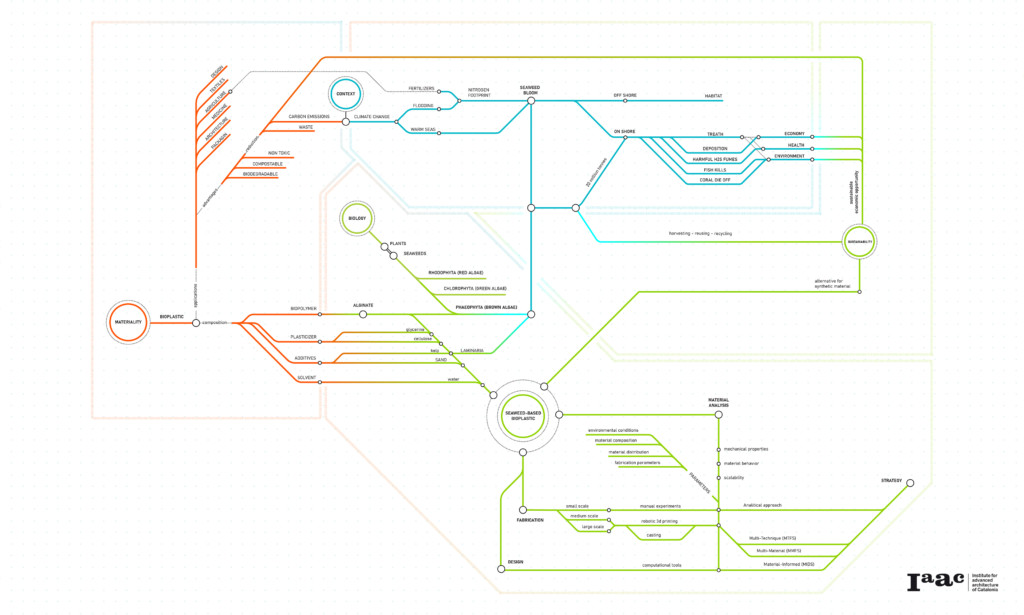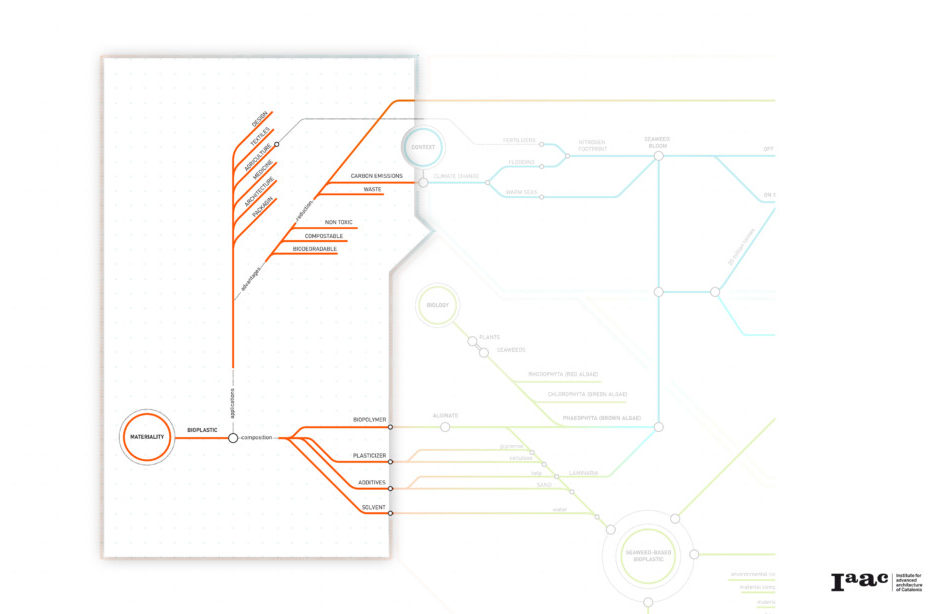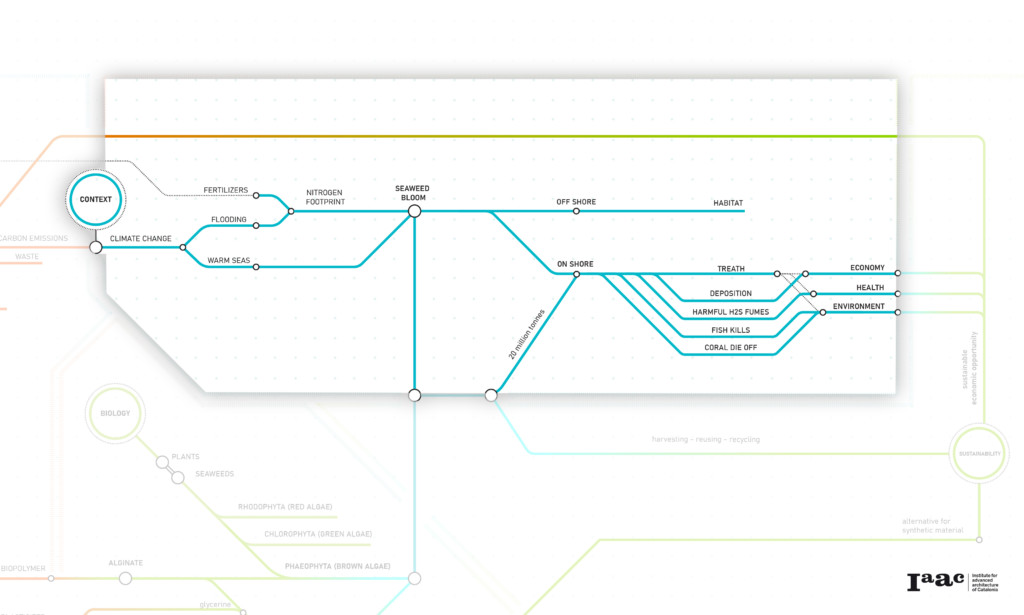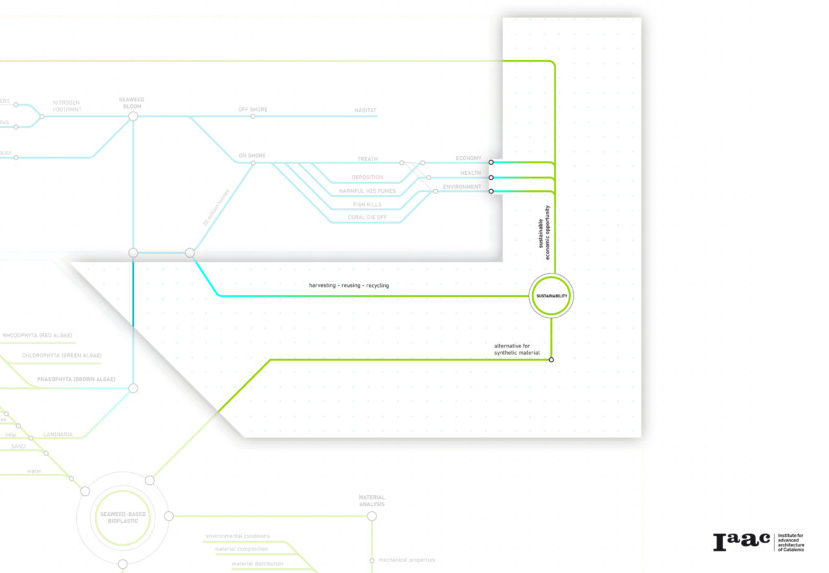COSMOGRAMME

The research focuses on additive manufacturing seaweed-based bioplastic. The goal is to provide an alternative for synthetic materials that can lead to a new mediation between the built and the natural environment and potentially lessen the toxic waste cycle caused by overproduction.
Climate change has already had observable harmful effects on the environment; less than a tenth of the material produced is recycled, leaving harmful environmental footprints, threatening the marine ecosystem, food safety, and human health contributing to climate change.
A graphic visual depiction has been used to map and show the elements, agents, context, and information that represent the research’s leading drivers. The diagram is divided into four interconnected areas: materiality, seaweed-based bioplastic, context, and sustainability.
MATERIALITY
Bioplastic’s material composition, applications and advantages
SEAWEED-BASED BIOPLASTIC
Research approach, material analysis, fabrication and design strategies

CONTEXT
Excessive seaweed bloom’s causes and impact
SUSTAINABILITY
Benefits of additive manufacturing seaweed as a bioplastic
Seaweed-Based Bioplastic // Cosmogramme is a project of IAAC, Institute for Advanced Architecture of Catalonia developed at Master in Advanced Architecture in 2021/22 by
Student: Elena Petruzzi
Faculty: Mireia Luzàrraga